
Journal Entries of the Upper Delaware River Region • Serving PA, NJ & NY Late Fall 2022



Publisher & Editor
Amy Bridge publisher@milfordjournal.com
Creative Director
Jimmy Sheehan
jimmy@milfordjournal.com

Associate Editor
B’Ann Bowman bann_bowman@yahoo.com
Advertising
Amy Bridge amy@milfordjournal.com
Susan Mednick susanmed2@optonline.net
Kimberly Hess Kimberlyhess212@gmail.com
Contributors
Joe Ferry, Jessica Storch, David Patrick Wilson, Meghan Carlson, Cathy Rosselli, Michelle Oram, Eric Francis, Robert Bowman
Mission
The tri-state upper Delaware River highlands and valleys are a place of rare beauty….
Seeing the region and living in it almost aren’t enough. Such beauty should be captured on canvas or film so that one can truly appreciate it, glimpse it in the quiet of an art gallery or museum, or between the pages of a poetry book or literary sketch.
The Journal Group’s mission is to capture these mo mentary snapshots of beauty graphically and through the written word. We celebrate our area and the unique ness of the people who live and work in the tri-state re gion. From Pike to Wayne and Monroe to Lackawanna Counties in Pennsylvania, upriver to Sullivan County and on to Orange County in New York, and to the head waters of the Wallkill River and along Sussex County’s rolling hills in New Jersey, with quaint, historic towns and hamlets at the center, the Journal Group opens its doors to our communities, businesses and organiza tions, to serve as a communicative journal of all that we have to offer for those who live here and for those who love to visit us, too.
Publication Information
The Journal Group publishes The Journal ten times a year and distributes it in eight counties in PA, NJ and NY. We assume no responsibility for unsolicited manu scripts. Contents may not be reproduced in any form without prior written permission. We reserve the right to refuse to print advertisements that we deem inap propriate. All rights reserved.
PA,
PO Box 1026 • Milford, PA 18337 • 908.578.3138 www.milfordjournal.com

4
Uniting
NJ & NY
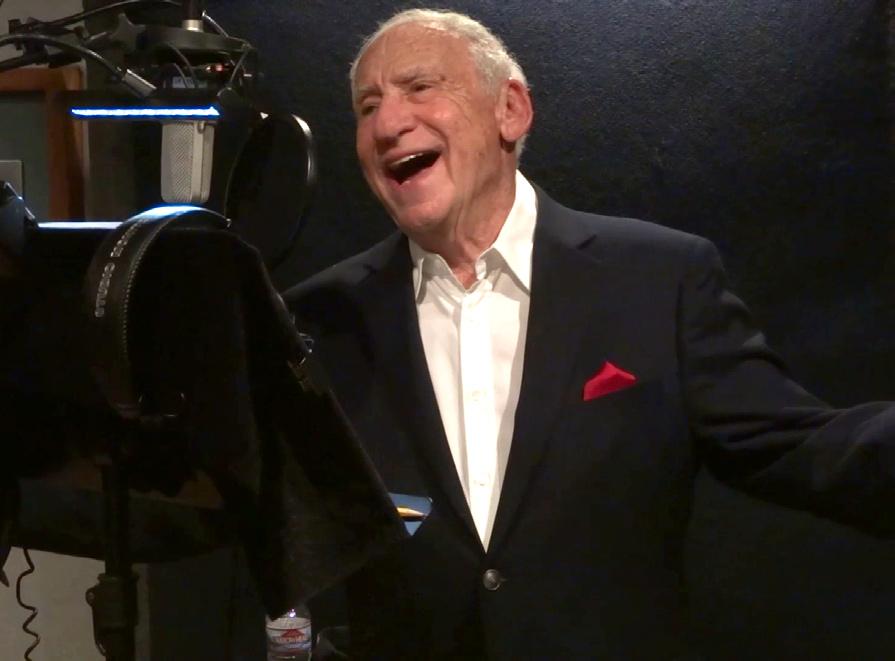
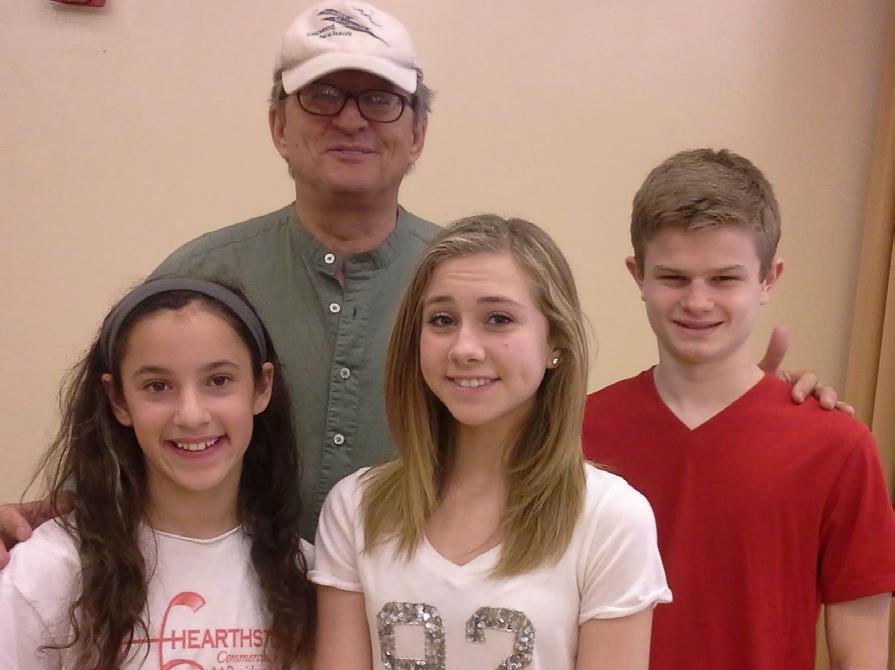



5 6 • journal entry 7 • poem 8 • calendar 39 • signs Late Fall 2022Contents Cover Line The Horn & Hardart Automat at 1557 Broadway, New York City, circa 1930s. Photo courtesy of A Slice of Pie ProductionsJournal Entries of the Upper Delaware River Region Serving PA, NJ & NY 10 • art • Boris Karloff Black Bear Film Festival Schedule 14 • Main Stage 16 • Salon 18 • history • All an Act 24 • food • At the Automat 28 • life • Acting Technique 34 • nature • Come Little Leaves
Journal Entry
I
Catch the Bear Buzz


t’s been a thrilling five years with Black Bear.

I started as a volunteer, became a Board Member, and now am honored to serve as the Executive Director in its 23rd year.
As I look back, I realize that it was my very first experience as an audience member in 2016 that has been a major mo tivation in all my hard work over the years. Having recently moved to the area, I was excited to attend the Black Bear Film Festival and meet others who were interested in making films. The experience was enthralling.
In the crowded room at the Film Salon, several indepen dent filmmakers were presenting short films. The screen ings ranged from comical to dramatic, with plenty of in triguing twists and creative camera work. I felt their passion in every frame.
Engaging with the artists and hearing the details of their filmmaking was riveting and inspiring. I was hooked!
The intimate environment of the Salon, the stage for shorter independent films, became a mainstay in my work at Black Bear. I saw myself in these artists, and I wanted to be part of it all.
Black Bear was a boon for me and my creativity. I hope to recreate that stimulating participation for our film makers and audiences on both the Main Stage and Sa lon.
Our schedule this year is full of opportunities to connect with filmmakers and catch the buzz of creative energy we experience when watching a film. It’s not just watching a movie, it’s sharing a journey together and bringing this art form to life.
Whether you are a cinema creator or a person who en joys the experience of being immersed in the filmmak er’s vision, let’s all slip into that magical world and stay a while.
Guest Entry, Veronica Coyne
 Banned and Challenged Book Bear by Milford Public Library staff
Gustav Klimt Bear by Joe Allen
We Rise by Lifting Others Bear by Robin Fohl
Wojtek the Veteran Bear by Jane Quattrocchi
Banned and Challenged Book Bear by Milford Public Library staff
Gustav Klimt Bear by Joe Allen
We Rise by Lifting Others Bear by Robin Fohl
Wojtek the Veteran Bear by Jane Quattrocchi
6
Autumn Cleanse

a hodgepodge of color crazy quilted through blocked evergreens embroidered branches stitched with multi-colored threads strip away sharp, icy rains of yesterday’s sunbaked blossoms moldy moss clings to bark like trophies never to be forgotten carpeted mountains piece a new path distant memories wrinkles of time make room for a new tomorrow
- Michelle Oram
 Photo by Michelle Oram
Photo by Michelle Oram
7 Poem
October
Andy in Nature: Exhibit. Forest Hall, Mil ford, PA. Christopher Makos and Paul Solberg display never before seen photos & videos focused on Andy Warhol and his relationship to nature. Exhibit open until October 23rd: Thursdays & Sundays 12–5 p.m., Fridays & Saturdays 1–9 p.m. Info: Facebook: Milford Hospitality Group News & Events.
October 1st Saturday 10 a.m.
Fall Classic 5K Run/Walk. Ann St. Park, Milford, PA. $20. Benefits Multiple Sclero sis Society & Milford Lions Club. Sign up: runsignup.com. Info: Facebook: Milford Lions Club.
5–8 p.m.
Music in Nature Gala. PEEC, Dingmans Ferry, PA $85. Semi-formal. Benefits Ding mans Ferry Theatre. Info: dingmansferry theatre@gmail.com, Facebook: Dingmans Ferry Theatre.
6 p.m.
.............................
Barn Dance. Peter’s Europa House, Shohola, PA. Dinner followed by dancing to live music. $75. Benefits GAIT Thera peutic Riding Center and GAIT-ACE En dowment Fund. Info: 717.991.3478, advi sorycouncil@gaittrcorg.
October 2nd
9 a.m.–5 p.m.
.............................
Applefest. Warwick, NY. Crafts, food, mu sic, children’s carnival & more. Hosted by Warwick Valley Chamber of Commerce. Info: 845.986.2720, www.warwickapple fest.com.
October 8th
Saturday 10 a.m.–4 p.m.
Hudson Valley Farm & Flea. Museum Vil lage, Monroe, NY. Makers, vintage, farm ers & food. $5. Info: 845.782.8248, Face book: Museum Village.
11:00 a.m.–4:30 p.m.
.............................
Fall Festival. Stillwater, NJ. Pony rides, hay rides, food, music, craft vendors & more. Info: www.historicalstillwater.org.
6–9 p.m.
Home-Land: Reception. ARTery Gallery, Milford, PA. Featuring Marie Liu & Ran dall FitzGerald. Free refreshments. Ex hibit: October 5th–November 7th. Info: 570.409.1234, arterygallerymilford.com.
7 p.m.
We Can Learn: Presentation by CreArtBox. Milford Theater, Milford, PA. Music meets
visual art and theatrical design. Hosted by Kindred Spirits Arts Program. $25. Info: 570.409.1269, www.kindredspirits arts.org.
October 8th–9th Saturday–Sunday
.............................
Heritage Weekend. Sussex County, NJ. Spon sored by the Sussex County Arts & Heritage Council. Tour of historical sites, museums, farmers’ markets. Info: 973.383.0027, www. scahc.org.
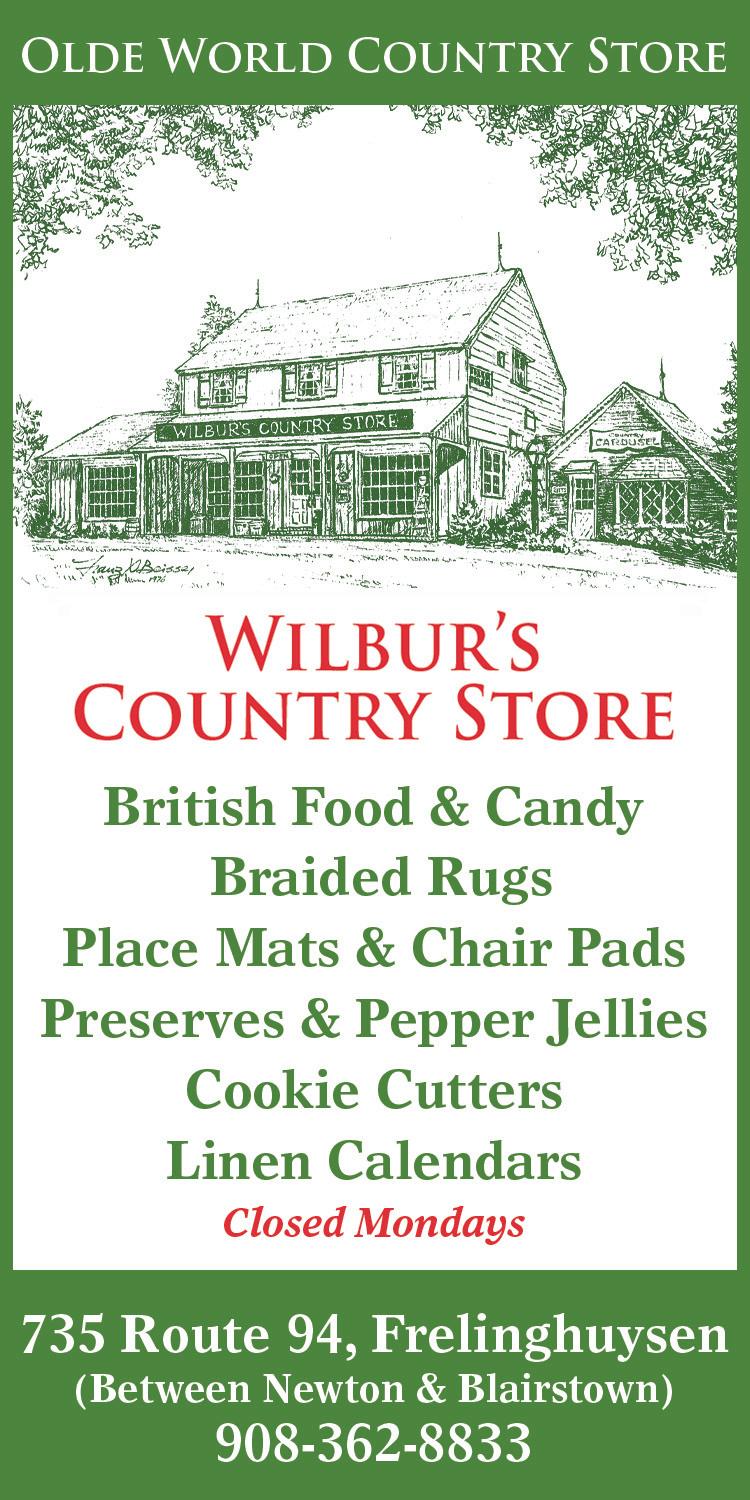
1–5 p.m.
.............................
The Big Sip: A Wine & Spirits Festival. Bethel Woods Center for the Arts, Bethel, NY. Featuring regional wineries & distill eries and live music. $30–$50. Info: www. BethelWoodsCenter.org.
October 9th
11 a.m.–4 p.m.
.............................
Fall Festival. Spring Street, Newton, NJ. Classic car show, live music, activities for kids & adults, craft vendors & more. Free. Info:. 973.300.0433, greaternewtoncc.com.
October 14th–16th Friday–Sunday
Black Bear Film Festival. Milford, PA. Info: 570.409.0909, www.blackbearfilm. com. See pages 14-17 of this Journal for film schedules.
October 29th
Saturday 10 a.m.–4 p.m.
.............................
Sussex County Harvest, Honey & Garlic Festival. Sussex County Fairgrounds, Au gusta, NJ. Celebration of agritourism, eco tourism, arts & heritage. Info: www.sussex farmvisits.com.
1 p.m.
.............................
Brant: After the War. Ft. Decker, Port Jervis, NY. Presentation by Frank Salvati. Hosted by Minisink Valley Historical Society. Info: minisink.org, Facebook: Minisink Valley Historical Society.
November 5th
Saturday 7 p.m.
Drastic Measures. Presbyterian Church, Milford, PA. Resurgam Quartet, saxophone ensemble. $25. Info: 570.409.1269, www. kindredspiritsarts.org
November 16th Wednesday 5:30 p.m.
Funding Their Future. Perona Farms, An dover, NJ. Hosted by Sussex County Com munity College Foundation. $100. Info 973.300.2121, Facebook: Sussex County Community College Foundations.

.............................
.............................
.............................
Calendar 8



9
 Boris Karloff in The Bride of Franfenstein
Boris Karloff in The Bride of Franfenstein
10
By Meghan Carlson
Opening Night at the Black Bear Film Festival Boris Karloff: The Man Behind the Monster
When one thinks of horror movies in the year 2022, some of the more recent slasher or paranormal films may come to mind. This genre gained traction in the 1970s, but many fans say that the old-school monster movies of the 1930s are their favorites.
One monster that stands out from the rest was Frankenstein’s monster.
Mary Shelly wrote Frankenstein, or The Modern Prometheus, as part of a game she played with her husband Percy Shelley and friend Lord Byron while on vacation. In the game, they each wrote a ghost story. Mary Shelly’s idea turned into a story that has enchanted audiences for generations, as both book and film.
The story of Frankenstein is actually about the monster that Victor Frankenstein created in his laboratory, and although the monster has no name, people refer to it as Frankenstein. The story has become notable as a tale of man playing God and a tale of prejudice.
Frankenstein was adapted to the silver screen in 1931, di rected by James Whale and starring Boris Karloff, an English actor whose given name was William Henry Pratt. The film became the catalyst for Karloff’s career, and he was brought back to star in a series of monster movies including The Bride of Frankenstein (1935), Son of Frankenstein (1939), House of Frankenstein (1944), and Frankenstein 1970 (1958).

Boris Karloff: The Man Behind the Monster, a film produced and co-written by Ron MacCloskey and directed and cowritten by Thomas Hamilton, will be presented at opening night of the Black Bear Film Festival. This documentary il lustrates the life of the actor who became famous for playing the iconic monster.
Ron MacCloskey, who will be interviewed by film historian John DiLeo after the screening, shared his thoughts and ex periences about the development of the film. The starting point for MacCloskey was 1962 when, at the age of seven, he got his very first Frankenstein model. He became a fan of the horror movies.
“I like the old school films, the Universal Studio movies from the 1930s to ’40s. I don’t know if the film genre of horror would have existed if it weren’t for Dracula and Fran kenstein. Those movies established that genre,” MacCloskey stated. “Back in the ’60s, you had models in the toy stores, movies late at night on TV, and this magazine called Famous Monsters of Filmland. I just loved it, started collecting, and never gave up.”
MacCloskey has been working in theater and film since 1979 and produced many movies, including Karloff and Me in 2006. “At first, the film Frankenstein got me interested, and then it was the actor himself,” he explained when asked about his decision to make the film. “Karloff became an in spiration to me because he was just a working actor going from film to film. If this had not come around, who knows what would have happened to his career. Karloff was 44 years old before he portrayed the monster in Frankenstein. After Frankenstein, he acted in about 80 films, including Black Sabbath, The Raven, The Mummy, and How the Grinch Stole Christmas.”
When asked why he chose to do the film as a documentary rather than a biography, McCloskey explained, “Biographies are what I call cookie cutter. It’s the same thing over and over again, and I just felt that this man had such depth in his tal ent and in his career. Very few people realize what type of ac tor he was. I thought that a documentary was the best way to convey that because when you do a biopic, you just focus on a certain area in an actor’s life, rather than his entire career.”
The documentary explores Karloff’s life, from his early days as an actor in silent films to the end of his career and his passing at age 81 in 1969. Directors, fellow actors, and many who knew Karloff and were influenced by his work share their memories and thoughts on the renowned actor.
next
11
Continued on
page
Art
Art Continued
People such as Guillermo del Toro, Ron Perlman, Roger Corman, Christopher Plummer, Stefanie Powers, and Sara Karloff (Karloff’s daughter) were interviewed for the film.

Getting everything together was not easy, and the docu mentary took many years to make. “Believe it or not,” said MacCloskey, “I picked up a camera for the first time and started interviewing people back in 1997. So, it took over 25 years. My first interview was with Sara Karloff. I couldn’t have done this without her. She was terrific, not only helping to tell her father’s story, but also telling me who else to talk to. I learned so much more about him than I knew before.
“It was difficult to find the right filmmaker. I love to watch Turner Classic movies with all those great films, and I saw a documentary on Leslie Howard that was filmed by Thomas Hamilton, who was from England. I found him and I told him what I wanted to do, and he said ‘Great, let’s do it.’ I am glad that I picked someone from Europe because I really did want that perspective. Karloff was not an American.”
He also went on to say, “Many people have different takes on the book itself. Is it a story about religion, man emulat ing God by creating a living being, or is it just a science fiction story?” Mary Shelly’s Frankenstein is considered by many to be the greatest book about prejudice ever written. “Accursed creator! Why did you form a monster so hideous that even you turned from me in disgust?” the creature cries out in Chapter 15.
MacClosky added, “The story is about about a creature (analogous to a person) who was not accepted in soci ety because of his appearance. Unfortunately, that applies more today than ever. Victor Frankenstein brought the monster into this world and, because of his horrific looks, abandoned him out of fear.
“Karloff said that he got most of his fan mail from children because they related to his portrayal of how the monster was not accepted. At some point, children feel that. To me, the story of Frankenstein’s monster correlates with Karloff’s life story. He was an actor who wasn’t given a chance to really blossom until Frankenstein. He kept working at it, persevered, and got an opportunity that changed his life forever. His life and career—he just never gave up—is a great story within itself,” MacCloskey stated.

Because of the long hours Karloff spent in makeup while playing his role in Frankenstein, Boris Karloff went on to become a charter member of the Screen Actors Guild, which helps protect actors and their rights. His legacy and inspiration continue on.
Boris Karloff: The Man Behind the Monster will be shown as the Premier Night Film at the Milford Theater on Friday, October 14th, at 5:30 p.m.
Ron MacCloskey (at left) with Guillermo del Toro at the Frankies
12






13
Schedule
Black Bear Film Festival October 14th–16th, 2022
MAIN STAGE FILMS Presented at the Milford Theater
Fri. 5 p.m. • A Feud in the Kentucky Hills (1912)

Filming took place in and around the Pike County town of Milford, Pennsylvania. The film features a modern soundtrack recently added by the talented composer Jane Mangini, keyboard player with the Trans-Siberian Orchestra.
Drama, Silent Short. Directed by D. W. Griffith. Curated by the Columns Museum. Starring Mary Pickford.
Sat. 1:30 p.m.
Mama Bears (2022)


Fri. 5:30 p.m. • Boris Karloff: The Man Behind The Monster (2021)
Boris Karloff: The Man Behind the Monster is a docu mentary film about the life and career of English actor Boris Karloff, star of the iconic 1931 film, Frankenstein.
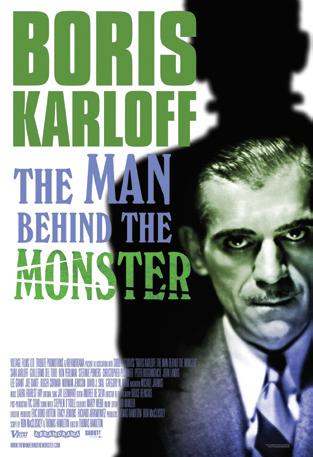
Documentary. 99m. Directed by Thomas Hamilton. Executive Producer: Ron MacCloskey. Featuring Boris Karloff, Christopher Plummer, John Landis, Ron Perlman, Guillermo del Toro.
Q&A after the film with Ron MacCloskey, hosted by John DiLeo.
Gala Dinner to follow at St. Patrick’s Hall with a deli cious assortment of small plates and choice of wine or signature cocktail. Music by the Mostly Jazz Trio accompanied by vocalist Yvonne Michel and special guest Ronny Whyte.
Sat. 11:15 a.m. • Omar Sosa’s 88 WellTuned Drums (2022)
Sat. 3:45 p.m.
Mama Bears is an exploration of the journeys taken by Christian mothers whose profound love for their LG BTQ+ children has turned them into fierce advocates for the entire queer community.

Documentary. 90m. Directed by Daresha Kyi.
Film Spotlight
Why We Walk (2022)
Why We Walk follows the journey of three Black men, united to empower and destigmatize urban communities of color and their participation in the great outdoors.
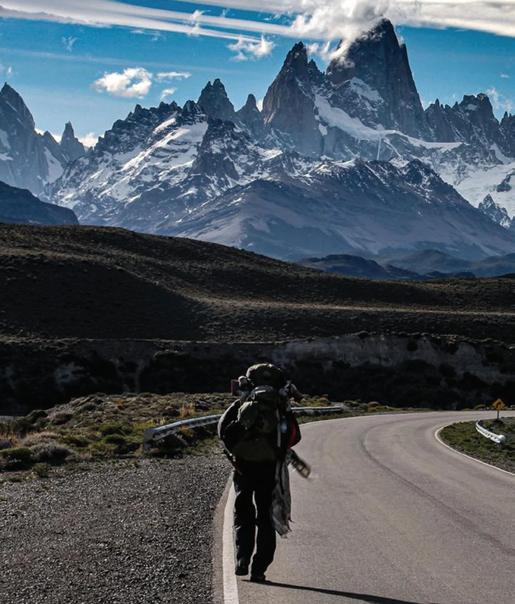

Documentary. 55m. Directed by Eric Bishop.
Omar Sosa’s 88 Well-tuned Drums is a documentary film on the life and music of Cuba-born pianist, com poser, and multiple Grammy nomi nee Omar Sosa.

Documentary. 99m. Directed by Soren Sorensen.
www.blackbearfilm.com • No Perfect Walk (2021)
570.832.4858
This documentary is about two friends who drop everything in their lives, sell all their belongings, and set out on a journey that would forever change their lives.
Documentary. 50m. Directed by Daniel Wilde, Justin Keller.
• Short
•
14 Special Presentaion Friday Premiere Night Film
Forsaken in the Dominican wilderness, an expectant Haitian mother desper ately seeks shelter during the Parsley Massacre of 1937.
Drama. 83m. Directed by José María Cabral (The Projectionist). Written by José María Cabral, Arturo Arango, Nurielis Duarte. Starring Cyndie Lundy, Ramón Emilio Candelario, Gerardo Mer cedes, Juan María Almonte.
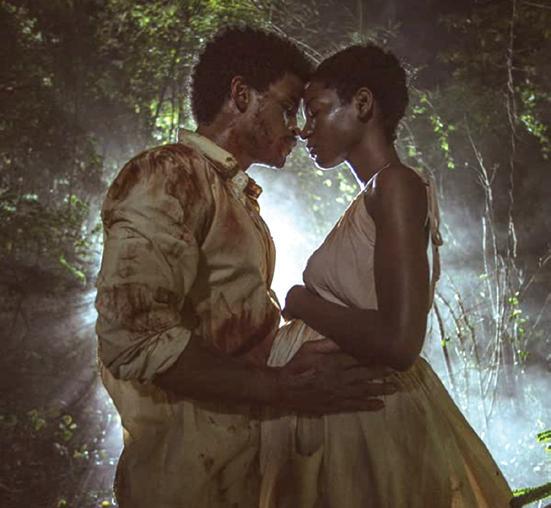
Sun. 12 p.m.

Doug is your average, everyday door-to-door cat food sales person who makes the decision to become a millionaire, only to find out it’s not as easy as he thought to come up with a mil lion dollar idea.

Comedy. 82m. Directed by Eric Alan Rousseau. Written by Eric Alan Rous seau, Doug Heinz, Phoebe Raileanu, Nathaniel Hendricks. Starring Doug Heinz, Phoebe Raileanu, Hunter Duncan, Zach DeSutter, Katherine Hutchins.

This same group also produced a short film in our Salon, Tomato Face.
The Automat tells the 100-year story of the iconic restaurant chain, Horn & Hard art, the inspiration for Starbucks, where generations of Americans ate and drank coffee together at communal tables.
Documentary. 79m. Directed by Lisa Hurwitz. Featuring Mel Brooks, Carl Reiner, Ruth Bader Ginsburg, Elliot Gould, Colin Powell.

Followed by a Q&A with Director Lisa Hurwitz.
Set in Allentown, Pennsylvania, this docu mentary offers a revealing look at the chal lenges everyday Americans face in a world of stagnant wages, increasing inflation, and unpredictable government aid.
Documentary. 88m. Directed by Michael Schelp, Alan Younkin.
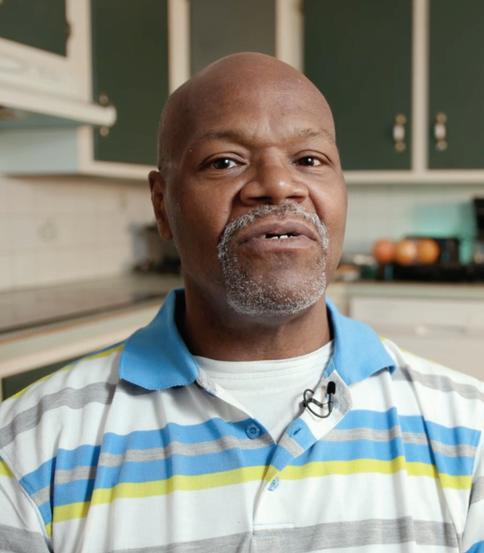
15
Sat. 6 p.m. • Parsley (Dominican Republic) (2021)
• Lucky Doug (2021)
Sat. 8 p.m. • The Automat (2021)
Sun. 2 p.m. • BROKE(N) (2022)
Schedule
Saturday
Good Shepherd Episcopal Church, Milford, PA
hArmless (2022)

10:00 a.m.–11:00 a.m. • Special Salon Segment
There Are No Small Parts. Hosted by John DiLeo.
A film-clip companion piece to John’s new book, highlighting outstanding film performances with screen time of ten minutes or less.
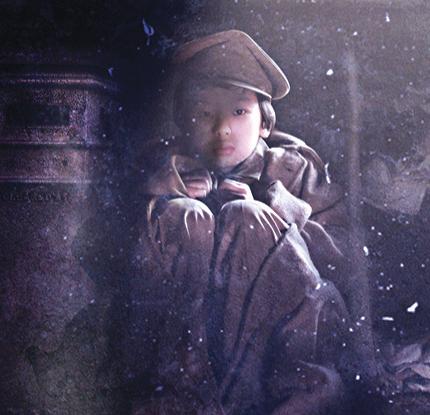
Followed by a Q&A and book signing with John DiLeo.
11:30 a.m.–1:00 p.m. • Environmental & Local Interest
The Shaker Legacy (2022)
Documentary. 9m. Directed by David Gibson, David J. Goodwin. This short documentary explores the design, cultural, and spiritual legacies of this utopian religious community and its impact on America today.


‘The Great Connector’: The Story of the Lawrence Hopewell Trail (2021)
Documentary. 17m. Directed by Thomas Joseph Bentey. This documentary showcases how local governments and big corpora tions can come together to create something wonderful.
Hellbender in the Blue (2022)
Documentary. 19m. Directed by Katelyn Calhoun
Taking place in the Blue River watershed of Southern Indiana, this docu mentary shares the story of a state-wide effort of improving the environ ment for our slimy friend and the water for us all.
Watching the Wilds (2022)
Documentary. 21m. Directed by Nick Natalicchio.
A short documentary film about lookout towers used to spot and report wildfires in the Moshannon Forest District of Pennsylvania.
The Importance of Pollinators (2022)
Documentary. 23m. Directed by Paige Pribilla. Come along and learn about the important roles different pollinators play, and how you can help in protecting those pollinators.
1:30 p.m.–2:30 p.m. • Short Film Showcase
Peanut Butter (2022)
Comedy Horror. 8m. Written and directed by Chelsea Komorowski. Star ring Bailey Shay, Mary Bolan, Gabriella Solano.
Angela is almost at one million subscribers on her YouTube channel and needs all her videos to be absolutely perfect. Things go south when her interns make a crucial error during filming.
Comedy Thriller. 9m. Written and directed by Elizabeth Cappuccino. Star ring Elizabeth Cappuccino, Stan Klimecko.
A young woman works the moonlight shift at her local bodega when upon closing, she discovers a patron who won’t exit the bathroom.

Manatee (2022)

Comedy. 7m. Written and directed by Allie Viti. Starring Priscilla YoungAnker. Produced by Elizabeth Cappuccino (hArmless).
Annette stops at a bodega while she appears to rehearse a confrontation on her way to work. While moving about the store, her internal crisis of confidence comes to a head in unexpected ways.
Johnny the Dime (2021) Comedy. 7m. Directed by Joseph Blake Menzel. Written by David Gazzo. Starring David Gazzo.

A brash and arrogant man catches a Peeping Tom spying on his sister. He vows to take revenge and discovers something very special about himself along the way.
Tomato Face (2022) Comedy. 14m. Written and Directed by Roy Lazorwitz. Starring Katherine Hutchins, Nathaniel Hendricks. On the eve before their final show after 4 years together, comedy duo Lau rence and Oliver have to come to grips with their partnership ending and the realization that maybe they’ve never actually been friends.
Aaron with 2 A’s (2022) Comedy. 17m. Directed by Michael Goldburg. Written by Michael Gold burg, Steve Lichtenstein. Starring Steve Lichtenstein (Bull), Anthony Rob ert Grasso (Jessica Jones, Gotham), Pamela Morgan (City On A Hill). Aaron retires from his day job to pursue his lifelong dream to be an actor. When he finally manages to land a major role, he discovers he’s his own worst enemy.
3:00 p.m.–5:00 p.m. • Documentary Showcase

Avoesis (2022) Documentary. 9m. Directed by Mykhailo Bogdanov. An exploration of natural silence and human existence within it.
Astor Place, The American Dream (2022) Documentary. 20m. Directed by Giuseppe Malpasso. Astor Place Hairstylists was closing after over 75 years in business. This documentary shows the coming together of people from all over the city as they fight to keep this NYC cultural landmark open.

16
Salon
Arabbin’ with the Hucksters and Vendors of Baltimore (2021)
Documentary. 26m. Directed by Michael Tiranoff. This 16 mm film documents a day in the life of Baltimore's Arabbers who sell fruit and vegetables from horse-drawn wagons throughout 1970s Baltimore.
The Militiaman (2021)
Documentary. 31m. Directed by David Peter Hansen. In the hills of rural Pennsylvania, the leader of a local militia must prepare his men for the turbulent political landscape of 2020 while at war with his own conscience.
Make Your Own Path (2021)
Documentary. 36m. Directed by David Thaler, Chris Thaler. The story of three developmentally disabled individuals and their journey to independent living utilizing Self-Directed services.
5:30 p.m.–7:30 p.m. • Student Film Spotlight
Student films nominated for Best Student Film 2022. Hosted by Chelsea Komorowski.
The End (2022)
Comedy. 2m. Directed by Alexandria Siah. Starring Will Akana, Samantha Cooper.
After watching her gallant knight die at the end of the film, it’s up to the de termined Princess Hilderose to take matters into her own hands.
Fisheye Lens (2022)
Comedy. 4m. Written and directed by Winnie Lu. Starring Riley Hashimoto, Michael Ursu, Avery Mei Skillin.
Willie is an excitable, but anxious, skater as he prepares to drop in for the first time.
CALL NOW (2022)
Comedy. 11m. Written and directed by Cody Hawley. Starring Gene Con nelly, John P. Coulter, Daniel Roebuck.
An impatient viewer struggles to obtain the phone number to an unusual shopping channel program hosted by a quirky salesman.
The Ben I Am (2022)
Documentary. 9m. Directed by Benjamin Swift, Bergen Hoff, Ben Greenly. Ben, a young filmmaker at a small college, comes toe to toe with an identity crisis when he investigates a group of 36 students who share one thing in common: his name.
Clown West (2022)
Comedy. 12m. Written and directed by Jonathan D. Willson. Starring Hayden Burke, Jeff Wittekiend, Carolynn Stouder.
When a mysterious cowboy known only as “The Clown” rides into town and encounters the cruel landlord, he must find his own strange way to outwit him, or die trying.
A Haircut (China) (2022)
Drama. 15m. Written and directed by Anran Zhao. Starring Shangbai Jiang. High school student, Xiao Ruan, likes her long and black hair. After she learned that the new school has a rule that girls must keep short hair, she decided to use the wig to disguise herself.
Deadname: SID (Belgium) (2022)
Documentary. 9m. Directed by Anthony Pieck.
Sid lost contact with his father due to a major disagreement that is magni fied by the family’s religious beliefs.
Girl of My Dreams (2022)
Drama. 8m. Written and directed by Austin Pope. Starring Darryl Bynem Jr., Gabrielle Antoinette Bynem, Amanda Richards.
With the title song written and performed by Jacob Evans, a couple strug gles to find resolution after disagreeing on what their future holds.
greener grass (2022)
13m. Written and directed by Matthew McIntyre. Starring Jack Fabian, Julia Esposito, Kyle Yin.
A high school senior spends his final summer before college with a new friend and attempts to move on from his hometown.
In the Moment (2022)
Drama. 14m. Written and directed by Easton Kerns. Starring Parker Ross, Ed Hanson.
Overwhelmed with the struggles that come with being an adult, a college student meets a lighthearted older man who shows him it’s ok to be ground ed in the present.
Meraki (Egypt) (2022)
Documentary. 13m. Directed by Basma Ahmed Mostafa. Docudrama about the journey to a peaceful world where you can achieve all your dreams with the help of Meraki (passion and hope).
All Grown Up (Hungary) (2022)
Drama. 17m. Directed by Diana Dombi. Starring Fazekas David, Juhász Jazmin, Nemet Klara, Virág Zsombor, Kis Benjamin, Nagy Laszlo Zsolt, Burjan Fanni. It’s summer time and a group of friends who just graduated are having a party by the river. The younger brother of one of the friends, who joined them, disappears as they drink and the worst is feared.
Sunday
11:00 a.m.–12:30 p.m. • Foreign Films Showcase

THE SPRAYER (Iran) (2022)
Animated. 10m. Written and directed by Farnoosh Abedi.
In a land where no one has the right to grow any kind of plants, either in public or private, a soldier finds a seed buried deep down in the dust, and his curiosity is just the beginning.
A Little Bit of Paradise (Poland) (2021)
Documentary. 18m. Directed by Andrzej Cichocki. This short film is about a Silesian family sharing moments from their lives, which are bound up with the nature around them.
FREE FALL (France) (2021)
Drama. 19m. Directed by Emmanuel Tenenbaum. Written by Emmanuel Tenenbaum, Guillaume Fournier. Starring Abraham Lewis, Vincent Regan, Packy Lee, Bally Gill.
When the first plane hits the World Trade Center on the morning of Septem ber 11th, 2001, a young trader in London jumps into the biggest trade of his life. Inspired by a true story.
Identibye (Iran) (2021)
Drama. 15m. Written and directed by Sajjad Shahhatami. Starring AmirHos sein Sabbaghan, Nasim Moslemi, Maryam Najafi, Samareh Barazandeh. The protagonist of the story faces the dilemma of choosing to embrace his innermost feelings without fear of judgment from others.
Opang (India) (2021)
Drama. 23m. Written and directed by Sanjay Bhattacharya. Starring Rigzin Yugyal Dorjee Serdup. The story of a 12-year-old boy who lives alone in a small wooden house at tached to a post office. He delivers the mail to villagers in the wake of a clash between the world’s greatest superpowers.
1:00 p.m.–2:30 p.m. • Short Film Showcase
While He Talks (2021) Comedy. 5m. Written and directed by Alexandra Lee. Starring Isabel Monk Cade, Kia Nicole Boyer, Lee Tyler. Where do we go, while he talks? It’s December 31, 2019. Delilah can’t seem to stay in her body.
the fix (2022) Drama. 11m. Written and directed by Emilio Miguel Torres. Starring Iza bella Alvarez, Valerie Ibarra, David Jofre. As a last resort, a working mother calls upon her distant father to babysit her young daughter. Although seen as less than ideal for both adults, the night proves to be healing for the family.
By Way of Water (2021) Drama. 18m. Written and directed by Alexander Spenser. Starring Scout Backus, Renee Gagner. A day in the life of two runaways as they navigate their world and face an uncertain future.
Footnote (2022)
Drama. 16m. Written and directed by Tommy Petroskey. Starring Robert McKeon, Kaitlyn Lunardi. When a grieving widower tries to bear loneliness by burying himself in books, he unexpectedly finds company in the pages.
The Legacy Sessions (2020) Drama. 35m. Written and directed by William D. Ashton. Starring Julie Kashmanian, Bonnie Jourdan, Silas Gordon Brigham. Isolation and punk music are the coping measure a sullen teenager uses to drown out the hurt she feels from her mother’s death. But a friendship with an elderly woman slowly helps her overcome her grief.
17
Continued
 Orson Welles's 1938 radio broadcast
Orson Welles's 1938 radio broadcast
18
History
By Jessica Storch
Shotgun Shells and Orson Welles
They put me in the back seat of our car, next to the milk, bread, shotgun and shells, and we headed out of town.” This was my father’s recounting of his young fam ily’s escape from their small, rural New Jersey hometown. Dad, Bill Bathgate, was just a young boy at the time of the incident.
The year was 1938, and our nation was on edge. We had just come out of the Great Depression, only to watch Hit ler’s rise to power in Germany. Many Americans feared that the worst could happen at any moment. My grandparents, William and Irene Bathgate, were no exception. While thoughts of a possible worldwide catastrophe were always lingering in the corners of their minds, the predictability of day-to-day living provided them with an ample amount of immediate security.
Life moved slowly for Pap and Gram at home in Branch ville, Sussex County, NJ. They were raising their two young children in a small and humble home at the top of Fox Hill Road, a short walk from the center of town. “More often than not, the spoils from a day of Pap’s hunt ing or fishing were that evening’s dinner. This community has always provided for its sense of country living, with its dairy farms, lakes, streams, and meadows,” my father explained to me. He went on to fondly recall a childhood when “Sunday mornings were for church going, and the afternoons were for porch sitting and waving.”
It was during one of those ordinary moments, on Sunday evening, October 30th, 1938, when Pap, Gram, and their young children fell victim to one of the most notorious pranks in the history of our country. Finally, settling in for a bit of evening respite, they tuned the dial of their Philco tube radio to a live broadcast of the Orson Welles and Mer cury Theater production, War of the Worlds. The program had already begun, but the family was eager to spend a few moments being entertained by what remained.
Many other Americans, like my grandparents, who had tuned in to the show late, missed an introduction that clearly described it as a theatrical performance. Instead of hearing the expected entertainment, they were shocked by reports of a violent extra-terrestrial takeover, and the result was panic!
Modern-day listeners most likely would have immediately identified the inconceivable storyline as fiction. Yet, as with so many people of the time, my father’s family was vulner-
able due to the precarious state of the world. It was later re ported that listeners throughout the entire country feared for their lives.
“I know what folks these days would think. I’m sure they would get a kick out of the thought of us sitting on the edge of our seats, straining to hear through the static for every bit of information that was reported. But I tell you, you can’t re ally know what it was like if you weren’t there. Lots of other folks were pretty frenzied as well,” Dad shared with me.
Whether or not the broadcast caused a widespread panic has been debated, but many things are for sure. On Octo ber 30, 1938, the Columbia Broadcasting System (CBS) featured War of the Worlds on their radio theater program. The radio play was performed as a series of interruptions to the live performance of an orchestra at the Meridian Room in the Hotel Park Plaza, New York City. These news bulletins created a sense of true, live coverage.

The play was told as if it were breaking news. It claimed to include interviews with college and astronomy profes sors, a Ph.D. from the National Museum of History in New York, and officers of the state militia. The rising ten sion from the reports was reinforced with police sirens and frightened eyewitness accounts. Listeners who had turned the program on late had every reason to believe that an alien invasion was taking place.
“As the story unfolded, we believed every bit of it. I re member Pap saying that the hair on the back of his neck stood up straight. We all thought that we were done for,” recalled my father.
The drama, which seemed to describe real-time, terrifying events of an alien invasion, was set in Grovers Mill, NJ, only 75 miles south of his family’s home. Coincidentally, Grovers Mill, in West Windsor Township, shared significant char acteristics with Branchville in the early 1900s. Both small towns could attribute their sustenance to grist mills and ac tive train lines. Surrounded by abundant farmland, residents of Branchville and Grovers Mill enjoyed the many old-time recreational aspects of their respective town ponds.
A small-town story about the biggest Halloween hoax our country has ever seen.
Continued on next page 19
“
As the announcer’s intrusions became more frequent, so did the severity of the situation. Welles managed to build sus pense at first, with limited and mysterious descriptions of unknown activity on Mars. Then, a “jet of blue flame shot from a gun” and moved toward the Earth. The announcer’s voice trembled, and his pace quickened as a later report in formed listeners that a huge flaming object fell on a farm in Grovers Mill. An eyewitness account was then believably told by a voice actor who claimed to have watched the ob ject fall onto his farm.
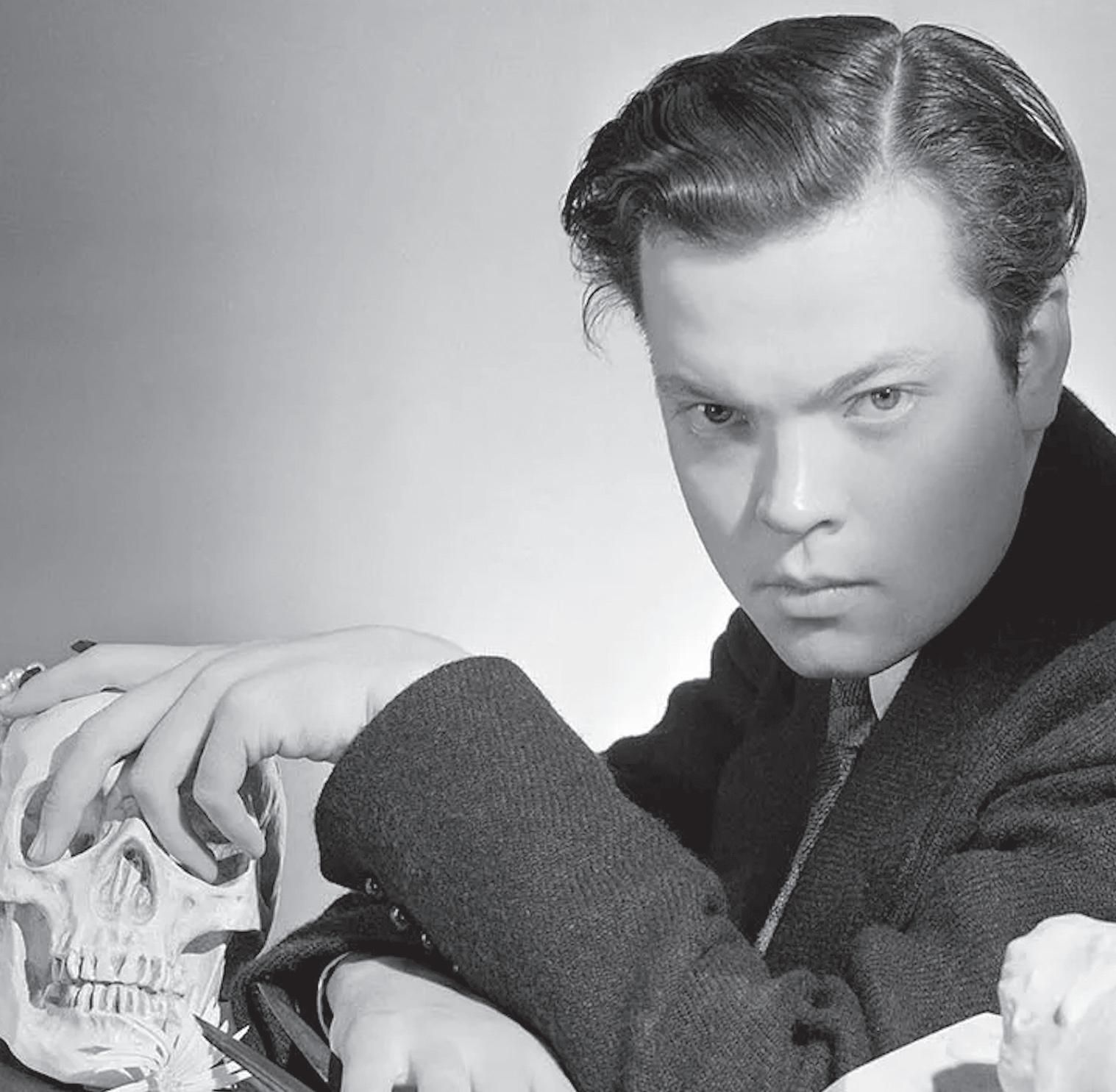
A scene unfolded that included extraterrestrials exiting a me tallic cylinder and intending to begin a war with mankind. “There, I can see the thing’s body. It’s large as a bear and glistens like wet leather. But that face, it… Ladies and gen tlemen, it’s indescribable. I can hardly force myself to keep looking at it,” reported Carl Phillips from the scene.
“I remember watching Gram as she closed her eyes, folded her hands together, and started saying a prayer for those poor souls that were under attack,” Dad recounted of those intense moments. He went on to say, “To look back on it, I have nothing but respect and admiration for my parents who were just trying to comprehend the seriousness of the situa tion and decide what they would need to do to protect us.”
The production proceeded with news of Middlesex and Mercer counties being placed under martial law, home evac uations across New Jersey, Red Cross units assigned to emer gencies, and Martian cylinders falling all over the United States. A battle between Earth and an invading army from Mars resulted in scenes of human destruction.
While the war on the radio was unfolding, my grandparents devised their own preparations to protect their family. “We believed that the aliens would land at Sussex Airport next, just a few miles from our home, and this put the fear of God in us,” Dad recalled. Pap and Gram set an emergency plan for survival into motion in a matter of minutes. “They threw the necessities for survival in the car, packed up us kids, and we headed to Child’s Park, in Dingmans Ferry, PA, to wait out the invasion. The plan was to live out of the car until everything was brought back under control.”
Frustrated with the limitations of their party-line telephone that prevented them from calling loved ones, the young fam ily drove through Branchville, stopping only to quickly con vey their plans to those they passed along their escape route. “We had the car radio tuned to the program for the drive up, and it only confirmed for us that we were doing the right thing. Somewhere on our way to the park, Gram said that she had forgotten to feed the cat and lock the door. Those were the only words that anyone spoke for the entire ride.”
Pap drove the family Ford over the winding gravel roads that turned to dirt, crossed over a running stream, and finally, entered Child’s Park. Through the dark, the car’s headlights
revealed a secluded and rustic camp site, abandoned at the end of summer. “We parked in one of their sites,” my father recounted. “It was just a small clearing with a stone fire pit. Two sides of the perimeter were bordered with dense forest, and Pap told us to stay put in the car and listen to the broad cast. Meanwhile, he went off into the darkness to gather up some kindling for a fire.”
Not too long later, Pap came rushing back to the car. He threw open the back door and said that there was a noise in the woods, branches were breaking and sounds getting closer. Just when he was about to say more, he stopped him self and grabbed his shotgun and box of shells. Then there was a lot of commotion all at once.
Dad explained, “I heard something like the pounding of footfalls coming from the woods. The next thing I knew, Gram was turned to face us from her front seat. She said to Pap, ‘Did you hear that? The radio! Did you hear it? We can go home.’ But Pap turned away from us with the gun in his hands. He took a quick step forward, heading back toward the pitch black. It seemed like he was ready to go fight, and that’s when Gram called out to him again, ‘I said it’s okay; it was all an act. Let’s go home!’ I could see Pap steady himself for a moment, like he had to make a quick decision, then he turned around and came back to the car.”
Gram had heard the conclusion of the performance. Orson Welles announced to his listeners that War of The Worlds was a radio prank. “We couldn’t soap up your windows and steal all your garden gates by tomorrow night…so we did the next best thing. We annihilated the world before your very ears,” Welles shared with his audience. He went on to say, “…and remember the terrible lesson you learned tonight. That grin-
Orson Welles
History Continued 20
Continued on page 22




21
History
ning, glowing, globular invader of your living room is an inhabitant of the pumpkin patch, and if your doorbell rings and nobody’s there, that was no Martian… it’s Halloween.”
“When Gram told Pap that it had all been a prank, even I could see the relief on her face and the wetness to her eyes. But I think I was just too young to understand Pap’s reaction. Something else had been out there in the woods, and he was ready to battle whatever it was. He kept that shotgun and the box of shells up in the front seat between him and Gram as we drove home,” Dad shared with me. He went on to say that his parents never spoke again of whatever had been lurking in the darkness at Child’s Park, but from time to time, they would retell the other events of that evening.
By Monday morning, newspaper headlines across the coun try reported the widespread hysteria that had been caused by Sunday evening’s drama. Was the magnitude of listener reactions really as intense as the newspapers claimed? Maybe we will never have a true picture of just how many Ameri cans feared for their lives that night from a time before cell phones, internet connections, and televisions. But for many, including my own father and his family, the trauma was real.
“A lot of people thought it was real, and I suppose that if I had been listening to the radio that night, I would have be lieved it myself,” recalled Aldo Sayre of Branchville, who was just a boy at the time. He heard about the broadcast while in town the following day and spoke with several townsfolk who had believed it to be genuine. Mr. Sayre confirmed that the broadcast, “stirred up a lot of people.”


“That Monday, life went back to normal,” my father recalls. “Pap went back to work as a mechanic at the Culver and Van Auken Garage on Broad Street, and Gram tended to us kids.” The shotgun and shells were returned to their resting place on top of the old Hoosier cabinet in the kitchen where they could be grabbed up at any moment for hunting rab bits, squirrels, and deer.

As for Orson Welles, War of the Worlds launched his act ing career as one of Hollywood’s legendary film stars. His many professional accomplishments, including Citizen Kane, have led many to refer to him as a genius. A genius who pulled off one of the most memorable hoaxes in our country’s history.
Dad and I recently took a ride up to Child’s Park in Penn sylvania, although it wasn’t the same anymore. The roads that lead there were paved many years ago. Now, they are regulated by traffic lights with homes and small businesses built up along the sides. When we thought we had missed a turn, I typed “Child’s Park” into my GPS, and we were directed to back track about two miles. As we pulled into the park’s entrance, we were greeted by two official-looking office buildings and signage that prominently disclosed the park’s rules and regulations.
“To state the obvious, the park isn’t the only thing that’s different now,” Dad shared as we meandered through its off-season camping sites. He stopped and turned to me, “I know that to younger generations it seems my parents had been naïve back then and easily fooled. But, there’s this part to my story, Jessie, that I don’t want to get lost,” he ex plained. “It’s not an event to add to the adventure of it, nor is it another piece of history.” He paused, thoughtful for a moment, then continued, “What needs to come through is the spirit of Gram and Pap. They had knowledge, guts, and faith. There’s just so many intangibles that come to mind when I think of them. Things that were really put to the test in this experience. I hope that important lesson won’t get lost on the modern-day reader.”
He was right. It was true that on that evening of October 30th, 1938, Pap and Gram faced a real battle. Their chal lenge was to conquer a dark fear of the unknown with their own grit and fortitude. And in the end, my grandparents had been victorious. Their reward was their loving family and the peace and safety of their humble home at the top of Fox Hill Road.
22
Continued



23
 Automat Director Lisa Hurwitz.
Photo by Mariana Mahoney
Automat Director Lisa Hurwitz.
Photo by Mariana Mahoney
24
By Joe Ferry
The documentary, The Automat, is an insightful, delight ful trip back in time to when Horn & Hardart’s Au tomat was the place to go for a meal, a dessert, or just for a cup of coffee. Peppered with wonderful interviews, remem brances, and anecdotes by Mel Brooks, Carl Reiner, Elliot Gould, and more notables, filmmaker Lisa Hurwitz skill fully and respectfully guides the viewer down memory lane.
Watching the film, one can almost taste the scrumptious, yet affordable, morsels offered up inside the rows of glass doors lined up on the walls at the Automat… just slip your nickels in the slot, turn the crank and a little glass door opened. Inside the cubby hole, your food awaited, maybe a turkey club sandwich or a piece of apple pie, if that was what you desired.
Comedian Carl Reiner reminisced, “I loved those little win dows at the Automat. Sometimes what you wanted was missing so you knocked on the window and waved to the person (in the kitchen).”
Behind the scenes, there were actual people working hard to keep this self-service restaurant running smoothly.
Originally from Los Angeles, Lisa got the idea for this docu mentary while eating at her college cafeteria. She did not have a grand plan to make a movie with comedian, screen writer, and actor Mel Brooks. She just needed to find a sub ject to make a short film for a class assignment, and the his tory of cafeterias seemed like an interesting starting point. Lisa simply wanted to know where and when cafeteria din ing began. It took a couple of years to get the film to the point where Mel Brooks came into the picture, introduced to her by a mutual friend, Carl Gottlieb.
Lisa said that everything changed after Mel got involved. He became the de facto narrator of the film. He told her to use everything that he said. “I’m popular, I’m famous. Make me the spearhead. I’ll help you to sell this meshugana documentary.”
As it turned out, he was perfect for the role. The narration by Brooks adds a sense of warmth and happiness to the film. He is a fount of knowledge regarding the Automat and the magical time of its heyday, circa 1920s to 1950s.

Brooks put his heart and soul into Lisa’s movie. He even wrote and sang a song for the documentary. In the tune, “At the Automat,” he croons, “I’ve tasted every kind of brew at every coffee shop. Some were good and some were great, but this one was the top.”
Lisa had aspired to make a film with music that sounded like it was a Hollywood soundtrack with orchestra and all. Orig inal music was composed. Mel’s tune was the perfect addi tion, although it was quite a job getting the recording crew together to cut the song during the COVID-19 restrictions. Everything had to stop until the restrictions were eased.
In the documentary, Howard Schultz was interviewed. “I became an entrepreneur the day I went to the Automat.” One of his inspirations for creating Starbucks was the Au tomat. Schultz said it was like magic when the little glass door opened, and your food was there.
Lisa feels that even though the Automat is gone, it lives on through the people who experienced it—from customers who cherish the memories, to Schultz who cites it as an im portant influence for Starbucks. Continued on next page
Photos courtesy of A Slice of Pie Productions
Behind the Window of The Automat
Horn & Hardart television commercial
25
Food
Colin Powell remarked, “Life changes, we all get a little older. But the older you get, the more you reflect back on what came in the beginning.”

With The Automat, Hurwitz has preserved an important piece of history. The movie harkens back to a simpler time, when something as easy as going out to enjoy comfort food, such as a pot pie or macaroni and cheese at the Automat, was a big deal.
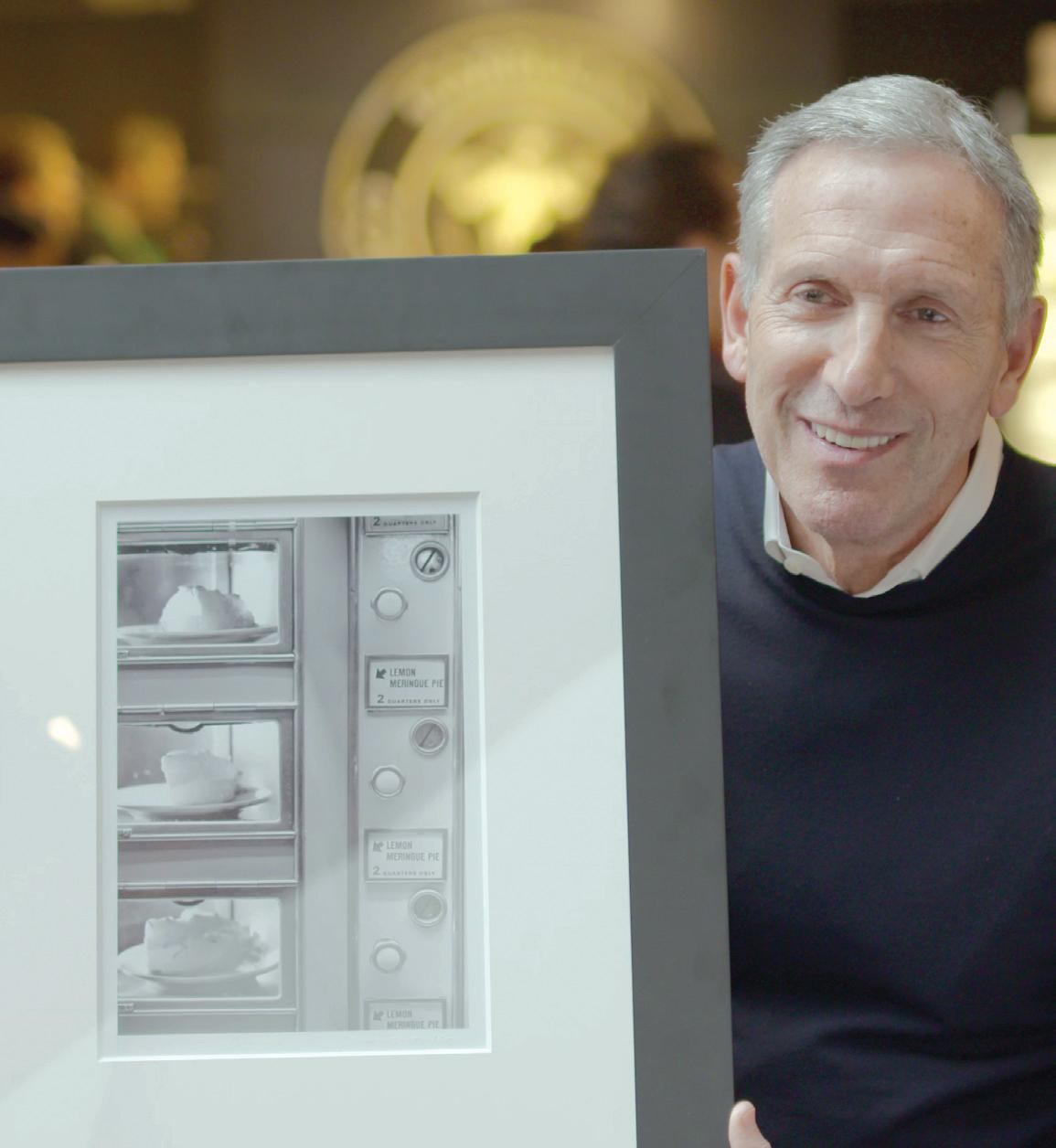
I have many memories of riding the subway from the Bronx to Manhattan with my mom when I was a young ster just to eat lunch at Horn & Hardart’s restaurant at 1557 Broadway.
Business men and women on their lunch hour; ladies out for lunch with friends; moms and kids; folks from all walks of life came out to take in the atmosphere—the Art Deco décor with the high ceilings—and to enjoy the thrill of turning the chrome and porcelain knobs on the little glass doors. There was something for everyone. The Automat is a true piece of Americana.
“The Automat was, for many people, a lifeline,” Lisa noted. “It was part of the fabric of the cities in which it existed. It was an interesting place that attracted in teresting people. The Automat was not only a popular eatery, it was a place where people liked to go to do their work. Writers, business people, and others liked to sip their coffee and do their work right there. The restaurant was a wonderland,” Lisa said. “The pies were crowd favorites.”
One of Lisa’s favorite parts of the process of filmmaking is the research. She was excellent at hunting down rare photos, archival footage, and the like. The original Automat opened in Berlin, Germany, in 1888. It soon caught on across the Atlantic. The first American Automat opened its doors in 1902 in Philadelphia and was an instant hit, offering delicious food, kept at reasonable prices because it was waiter-less.
The sleek chrome finishing touches represented the fu ture to its patrons. In 1912, Horn and Hardart opened a second restaurant in New York City’s Time Square. It was an immediate success.
The Automat opened more than 200 locations in NYC and Philadelphia and their respective suburbs and served over 800,000 people every day. The coin-operated Au tomat thrived throughout a good part of the 20th century, finally closing its last restaurant in 1991.
As Mel Brooks reminds us in his song, “There was nothing like the coffee at the Automat / Nothing fancy or preten tious like today /…You would find a seat hang up your coat and hat / And for just a shiny nickel, your taste buds you could tickle / With that wonderful, magnificent, un believable / Awesome coffee at the Automat.”
Lisa is on the road quite a bit these days, attending openings and film festivals. Her movie is a smash, and she is excited to see it receiving so much attention. Lisa said, “I’m thrilled to be coming to Milford and absolutely honored that The Automat was selected to be shown at 8 p.m. on Saturday, October 15th at the Black Bear Film Festival.”
Colin Powell holding a photo of himself
Howard Schultz holding a framed Automat photo
Food Continued 26

 Baltimore students having their lunch at the Automat in 1964
Interior view of an Automat
Baltimore students having their lunch at the Automat in 1964
Interior view of an Automat
27
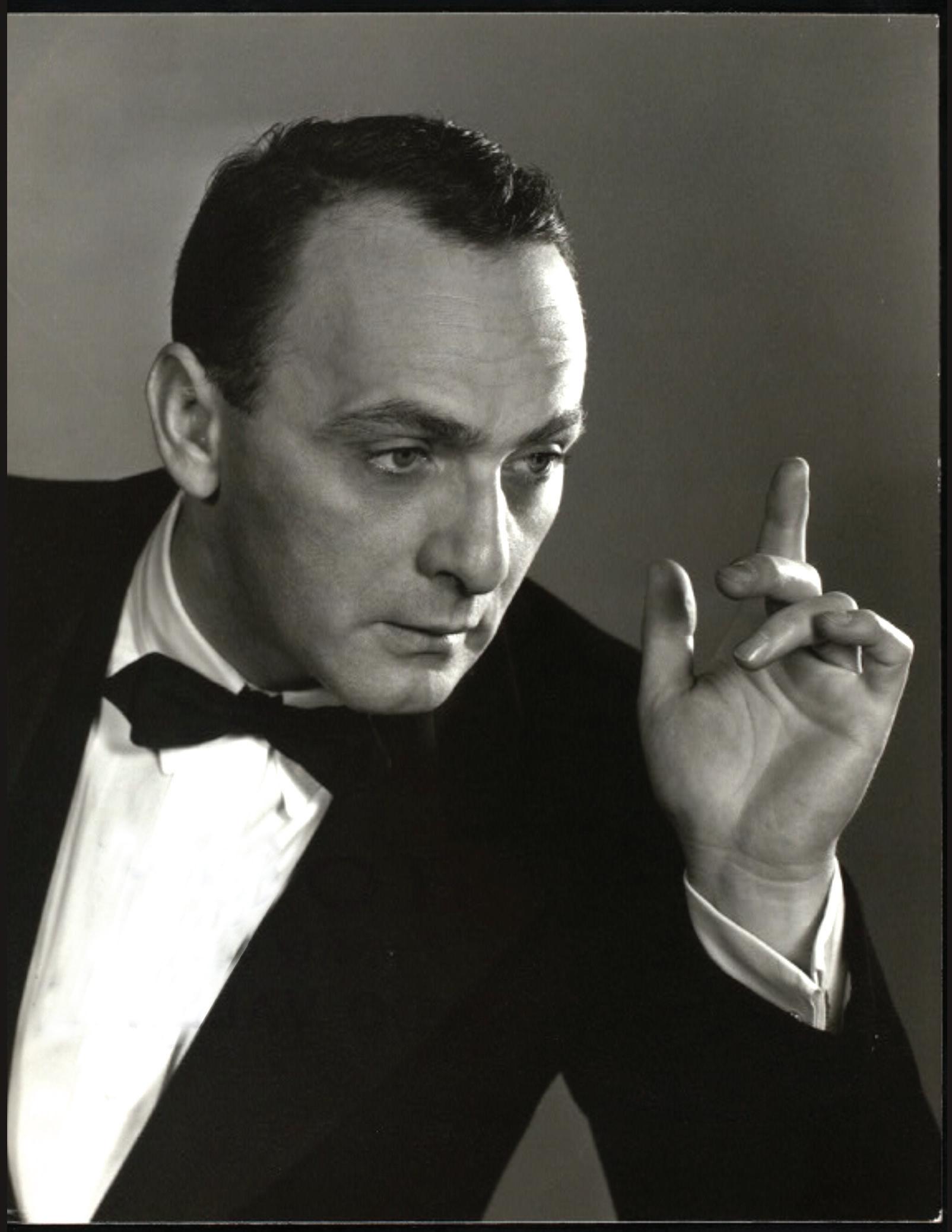
“The greatest piece of acting or music or sculpture or what-have-you always has its roots in the truth of human emotion.”
-Sanford Meisner
Sanford Meisner.
Photo by Alfredo Valente
28
By David Patrick Wilson
Acting for a New Century The Meisner Method
I f you look up the word “act,” which is the root of “acting,” it will tell you that it is “the doing of a thing” or “to do or to be in the process of doing a thing.” Sanford Mei sner’s 20th century definition of acting was “to do a thing and be truthful, under imaginary circumstances, from mo ment to moment.” This is the basis of the acting technique we call, the Modern Meisner Method of Acting.
Background
In the summer of 1969, I walked through a red door with white trim and into the Neighborhood Playhouse School of the Theatre, on East 54th Street in NYC. There, as fate would have it, I met a man who would alter my existence.
Sanford Meisner gave me an insight into my future and pro vided me with the means to pursue my current livelihood, which has more than sustained me and my family for over half-a-century and counting. His teachings and mentorship have led me to incredible adventures and experiences all over the world. By the time my formal training was completed, two and a half years later, the Master had transformed me from just another kid from a small town on Long Island into a professional with a future.
By the end of the 20th century, Meisner and others had completely altered actor training and provided the entertain ment industry with a multitude of fine, award-winning ac tors. Their work shifted perceptions and awareness of what it is to be an actor. He, along with protégés such as William Esper, Fred Kareman, and Bill Alderson, taught me how to discipline myself to deliver unique and powerful perfor mances—based on profound preparation—while maintain ing my mental, physical, and emotional health.

Among the many things that were part of Meisner’s “prepa ration” was how to successfully deal with the emotional life of any character in order to keep an actor a healthy human being. He wanted to provide practical, usable, and useful tools that would keep actors well and productive through out their careers and lives. This has always been my commit ment, as well. He strongly felt, “An actor has to act. You can’t work if you’re not well.”
In the 1930s Meisner began working in what was called the Group Theater, modeled after the Moscow Art Theater. The Group Theater spawned all kinds of actors, writers, direc tors, and producers. It was a “creative commune” with op erations based in both the Hudson Valley during the spring and summer and New York City during the rest of the year.
The nearly endless list of “names” that came out of the Group reads like a “who’s who” of the entertainment indus try of the time. Many went on to become the titans of the industry. People such as Lee Strasberg (with whom Meis ner started the Actors Studio), Morris Carnovsky, Cheryl Crawford, Harold Clurman, Stella and Luther Adler, John Garfield, Franchot Tone were among the many. There was a book written about them, The Fervent Years. I don't even know if it’s still in print anymore, but it’s certainly worth a read, if you can find it.
“Those who can, do…” A handful went on to become teachers and coaches. Some went to Hollywood or New York and became stars, or trained others to become stars. Those who chose to teach completely altered the landscape of performance in Ameri can film and stage. By mid-century, their work would lead to breakthroughs with performances such as Brando’s in A Streetcar Named Desire, or Montgomery Clift in Suddenly Last Summer. Performances such as these completely rede fined modern drama.
Brief History
The evolution of “the method” has been based largely on western elements adapted from its Eastern European roots (Stanislavski). This migration into western culture early in the 20th century caused radical changes in how we Ameri cans perceive modern characterization.
Likewise, it changed how we approach preparation to per form. It completely transformed where and how we look to gather source, or background, information about the char acters being created, as well as how we use what we find and connect it to ourselves, thus fulfilling the rigorous demands of any role. Continued on next page
Sanford Meisner with students
29 Life
Method Schmethod!
Why even bother with a method, or a technique? Well, you hear people say, “Oh, that guy or this woman, they’re just a natural.” The fact of the matter is, you get to be “natural,” exactly once.
After that, you had better be able to recreate what you just did as if it were natural, time after time. It must be as if it never happened before, all while operating under imposed imaginary circumstances, maintaining the truth, and keep ing the freshness of the performance intact. How do you expect to do that if you do not have the tools required to retool the characterization in a way that appears as natural, fresh, and new as the first moment that you, or anyone else, first experienced it?
Tool up
It is the tools that the method is all about—a set of inter nalized utensils, akin to the tools in a toolbox that a fine craftsman uses because, as an actor, that’s what you’re deal ing with—a craft. That word itself, “craft,” comes from the German root word kreft. It means power.


The power of the actor is enhanced by the excellence and ef fectiveness of the tools that he or she uses to fashion and fine tune a real character, someone that actually resonates and even appeals to an audience. What they are creating strikes a chord somewhere within themselves and within the audi ences that witness the performance. There is no other life experience quite like it.
It works!
I can say without hesitation, that in the 53 years that I’ve been involved with performing: learning, teaching, direct ing, writing, and producing this method, created by Sanford Meisner, it never fails to work. After decades of testing its principles and practices, it is the basis for all that I do now.

I have failed on occasion to use “the method” to its best advantage, leaving something out, dropping an element and thus misplaying my part, but IT has never failed when its integrity is maintained, or once it is restored.
An actor can only hope that even without all of the tools, they will find the character. In my opinion, Hope is the guy who danced with Crosby in all of those “Road” pictures. (Look it up.) The truth is, there is no “finding a character.” There is only “creating a character” in which you can reside honestly during your performance of that role.
The Rule of Fours
Creativity itself, much like the seven key exercises to de velop your acting craft in the Modern Meisner Method, operates by a process that embraces a four-point rule sys tem that I call, the Rule of Fours.
As a matter of fact, all the technical exercises that I have re-coded from Meisner’s basic technique must have four basic, variable but immutable, components in order to be able to “seat” the character, if you will. By that I mean, literally, if you think of a chair, it must have four legs. When you sit on that chair you can be confident that it is not going to fall over, perhaps injuring yourself in the process. If you take one leg away, you cause instabil ity. You lose that confidence to sit on it in the same way as you do a normal chair. Suddenly, your concentration goes elsewhere, probably to, “How do I stay on the chair, and not fall off and hurt myself?”
Well, that’s the idea behind “the method,” as we at the Academy teach it. If the components are truly there and you put them together with the specifics (By the way, there can’t be too many specifics in your characteriza tion), it will elevate your portrayal to “real life” status. Once there, you can create something that is memo rable, something with which real people can identify, something impressive, something that the audience can take with them.
We are communicators!
Communication is what acting is all about. Communica tion is not about what's happening where I am or what’s happening where the other person is; it’s what happens between us that makes us react. Continued on page 32
30 Life



 David Patrick Wilson, back row far right in both photos, with his acting students.
Photos courtesy of David Patrick Wilson
David Patrick Wilson, back row far right in both photos, with his acting students.
Photos courtesy of David Patrick Wilson
31 Continued
Life
When actors reach the audience, and they see the true con flict, confrontation, and interaction for what it is to them, our communication is complete. Whether it be humor, dra ma, or tragedy, total fact or pure fiction, it really makes no difference, as long as it is truthful and has integrity.
When the impact arrives—once those characters come up against each other—that’s where and when the audience en gages. What results is like a laser beam that shoots into the hearts, minds, and spirits of the beholder. If the elements are there and completely realized in the actor, they will in form, educate, and manifest some feeling, thought, or new consciousness that the audience did not have prior to experi encing the performance. That is pure communication with real impact. It is that for which we, as performing artists, constantly strive.
The bottom line is that acting, using the Modern Meisner Method is safe, organic, fruitful, and FUN!

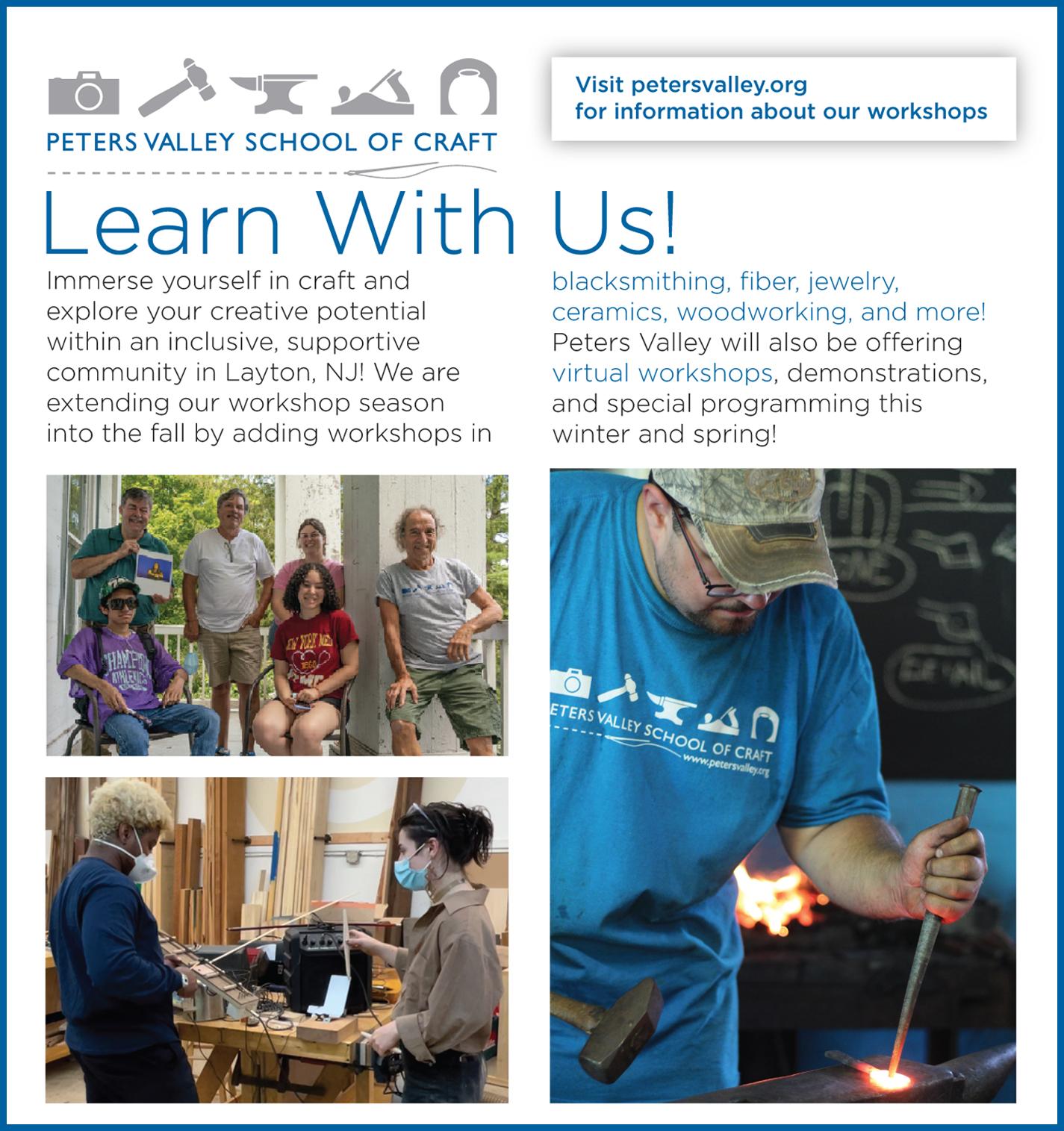
David Patrick Wilson and his wife Nan Gill-Wilson operate the Academy of Film, Television, Stage and Performing Arts in Goshen, NY. Their purpose is to train talent and technicians to create, develop, produce, and distribute the highest quality entertainment product for the worldwide market. For more in formation, visit AFTSPA.org or willygilly.com.
1. You have to see it. You have to envision clearly what it is that you are actually doing and who you are being. Based on all of the information that you have observed and absorbed, your “inner vision” becomes critical.
2. You have to say it. Once you’ve absorbed all of those things you’ve seen, and they can now be ar ticulated out loud, the next thing to do is just that. Speak it. Articulate what is so for you, What’s actually there to which you are present. Who am I? What am I doing?
3. The next thing to do is write it down, put it in evidence. One of the things that you work on in this technique, as you work on a script, is paraphrasing, where you take in what the writer has written, you make it your own and write down how it occurs for you, personally. (If it’s not personal, it’s no good.)
4. Just do it! So, now your character begins to take shape. You conceived it, spoke it, and recorded it in writing. It’s “in evidence” for all of the Universe to see and hear. All there is to do then is to “just do it.” (Nike got that right!)
David Patrick Wilson’s Rule of Fours
32
Continued
.............................................................................................





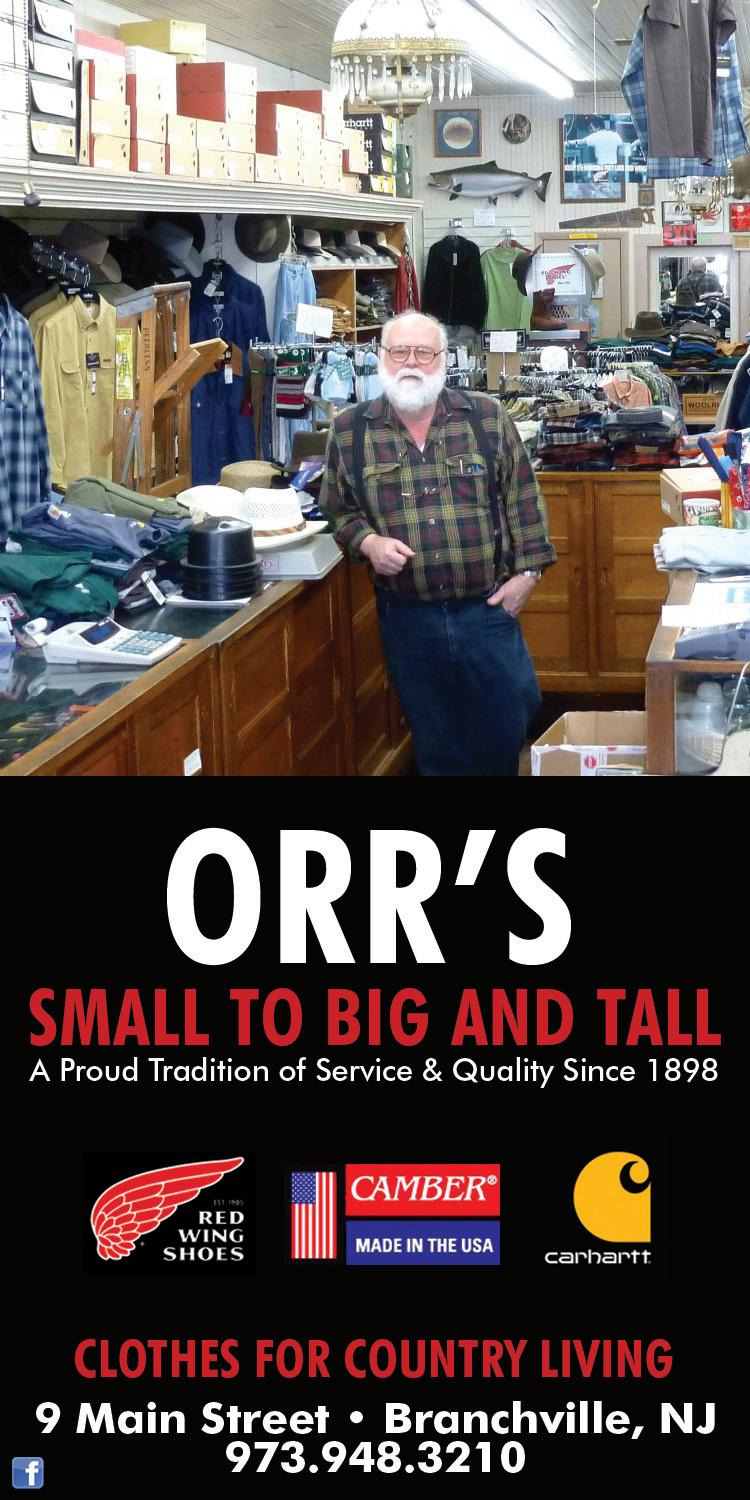
33

34 The Opera Tree
Nature
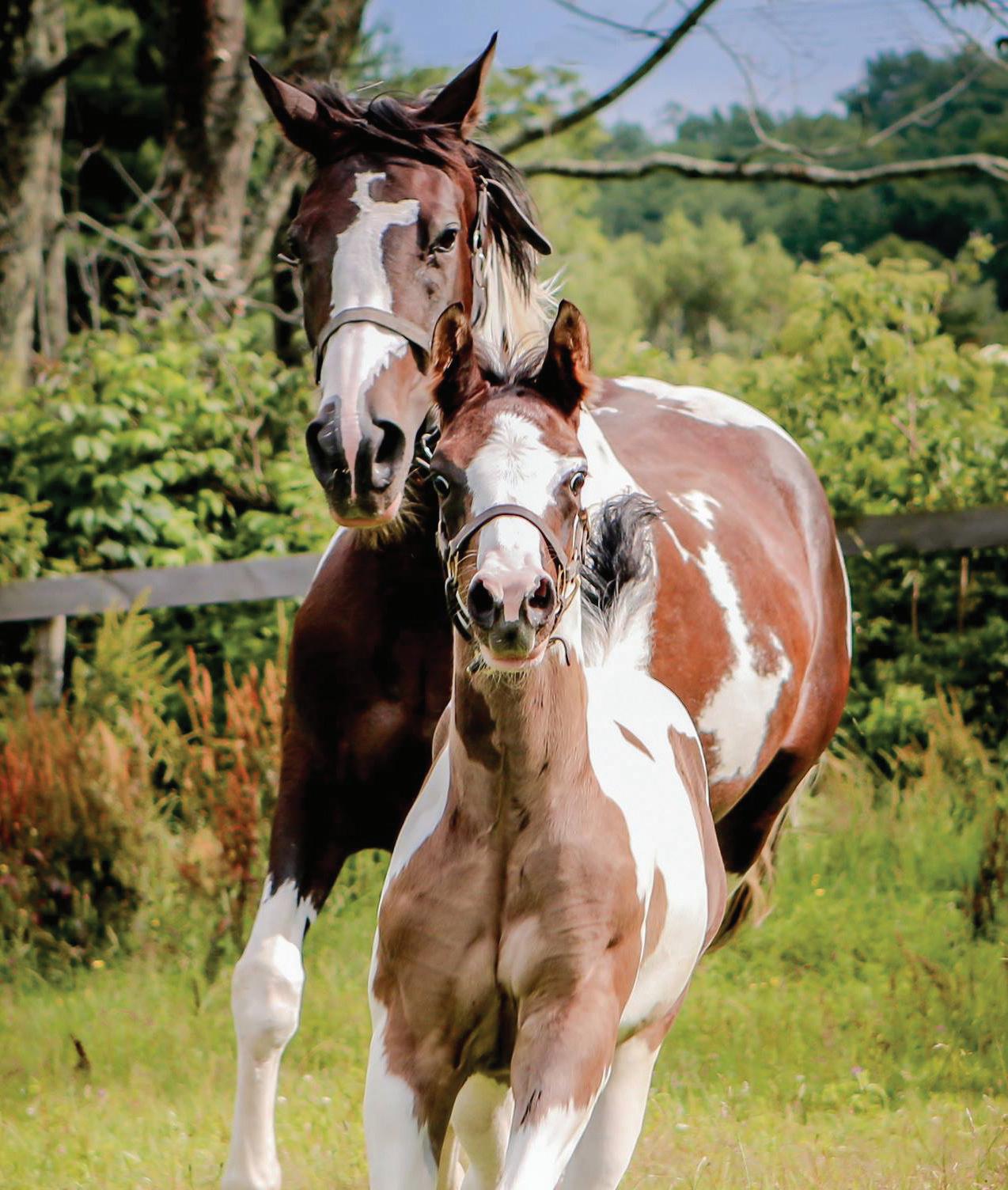
Come, Little Leaves
“Come, little leaves,” said the wind one day, “Come o'er the meadows with me and play; Put on your dresses of red and gold, For summer is gone and the days grow cold.”
Soon as the leaves heard the wind’s loud call, Down they came fluttering, one and all; Over the brown fields they danced and flew, singing the glad little songs they knew.
“Cricket, goodbye, we’ve been friends so long; Little brook, sing us your farewell song; Say you are sorry to see us go; Ah, you will miss us, right well we know.
“Dear little lambs in your fleecy fold, Mother will keep you from harm and cold; fondly we watched you in vale and glade; Say, will you dream of our loving shade?”
Dancing and whirling, the little leaves went; Winter had called them, and they were content; soon, fast asleep in their earthy beds, The snow laid a coverlid over their heads.
 Photos by Cathy Rosselli
My grandmother used to sing this poem to my father, and then he taught it to me. Photographer Cathy Rosselli
By George Cooper (1838–1927)
Painted Horses
Painted Horses
Photos by Cathy Rosselli
My grandmother used to sing this poem to my father, and then he taught it to me. Photographer Cathy Rosselli
By George Cooper (1838–1927)
Painted Horses
Painted Horses
35

 Spotted Pony Farm Mountain View Farm
Spotted Pony Farm Mountain View Farm
Nature Continued 36
 Autumn along Kittatinny Mountain Ridge
Autumn along Kittatinny Mountain Ridge
37


38
Signs Planet Waves by Eric Francis
Aries (March 20-April 19)
Your ruling planet Mars is slowing down to its forthcoming retrograde, and delivering you a series of messages you’d have to be sleeping to miss. These involve understand ing results of your prior sexual experiences. The moment that sexuality in any form veers into the realm of power, or transactional exchange, you are outside the realm of hu man contact for its own sake. Your charts are calling for a review. It’s rare that underlying and usually concealed material is so readily accessible. Right now, it is.
Taurus (April 19-May 20)
You seem to be rolling the dice on a matter about which you need to make a careful personal evalua tion. The theme for the foreseeable future involves being of two minds about something, and tending to emphasize one at the expense of the other. Pay at tention if you find yourself digging in your heels on a point of view. Notice what’s happening any time you exercise power or influence over people. There is more to life than self-preservation.
Gemini (May 20-June 21)
Mars has reached a sensitive spot on its way to turning retrograde on October 30. You may be getting these flashes that you live in a far greater universe than you ever imagined. It’s as if you’ve lived in a little cottage in a forest but never went more than a mile from your home. Then one morning you wake up from a dream that you’ve been levitated one mile into the air. You’re still no further from home, though the perspective is dif ferent. It is indeed possible to forget the shift in per spective; and it’s also possible to remember. That is a conscious act.
Cancer (June 21-July 22)
When you’re driving through a fog at night, turning up the high beams doesn’t usually help. Low-angled, dim light gets the job done, and that’s what to apply to your current situation. Your chart describes the perfect op portunity to navigate using an intuitive intelligence that serves you well. Many confuse intuition and paranoia, but if something is attached to a threatening kind of fear, it’s probably not true. To know where you stand with yourself, document your thoughts. Please do not trust to memory; it’s good for some things and not for others.
Leo (July 22-Aug. 23)
It will help you to keep track of where the boundary of your life ends and that of other people begins. The best way to determine that edge is to notice your priorities. Whether you’re in a one-on-one or a group situation, study closely what others demonstrate is important to them. This will be reflected in their deeds more than in their words.
Virgo (Aug. 23-Sep. 22)
You may be experiencing an energy lag and a spike in frustration. If you can relax a little, you’ll be able to use the energy lull as an opportunity to listen to yourself. As to any frustration you may be feeling: it’s becoming diffi cult for male and female to express themselves in natural ways. I suggest you be exactly the man or woman you want to be, and state your desires boldly.
Libra (Sep. 22-Oct. 23)
You may be having some challenges figuring out who your friends really are. Yet this is not so difficult to dis cern; a friend is what a friend does. See if you can purge all sense of desperation; set aside any need to exercise power, and let your strategy be “the greatest good for all concerned.” Give each conversation three tries. The discussion will either unravel the puzzle, or reveal that you cannot.
Scorpio (Oct. 23-Nov. 22)
If you find yourself pushing back against something, the chances are that it involves wanting to move past your early family structure. Usually, we carry this around like a turtle carries his shell. Study the nature of the conflicts in your life and ask yourself how many times you’ve dealt with them. The rebel lious behavior of others may be someone acting on your behalf to move the story along.
Sagittarius (Nov. 22-Dec. 22)
The main reason people hesitate to exercise their pow er is they’re afraid it might get a result; they end up feel ing powerless because they give themselves no other option. In fact, you have plenty of options, though they depend on your being willing to speak, to listen to oth ers, and to make decisions based on something other than your fears. This is about the vulnerability and con tact that comes from honest exchange. There seems to be an assault being waged against sincerity -- but that’s not your war.
Capricorn (Dec. 22-Jan. 20)
Of all the planets, Pluto in Capricorn is in the latest degree. This is symbolic of you heading into unfamiliar territory that’s very much at the edge of your own reality. You’ve been in this position many times, but now this process is approaching its peak and starting to resolve. Yet resolution means that you are being guided to experience a series of breakthroughs that may feel like the very ground of your mind cracking open. This is really about the old crust giv ing way to something both necessary and deeper.
Aquarius (Jan. 20-Feb. 19)
You are currently blessed with an opportunity to move some of your creative energy through your body, mind and soul. Start in small ways: the point is not a great accomplishment but exercising your creative will. Then there is your sexual will, which is closely related. Before you can do something, you have to know you want to, and given your current chart, you also have to say so. If and when you come up against the block, pay attention to what arises as the point of resistance.
Pisces (Feb. 19-March 20)
Be bold about your financial moves, which begins with understanding and asserting your worth. You tend to underestimate yourself, whether it’s your usefulness, value, or the unique contribution you can make. You may think that only your positive emotions are attrac tive. Actually, what would make you appealing to those you want to connect with is that they appreciate the re ality of who you are. Be right where you are at all times, and notice carefully who (and what) shows up.
Read Eric Francis daily at PlanetWaves.net.
39

